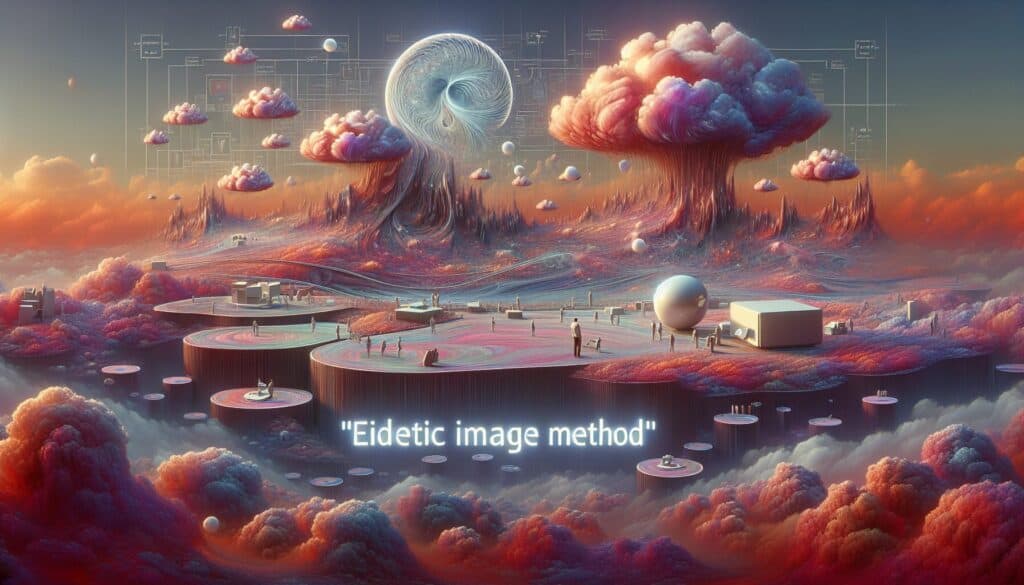Eine Technik, die in der Nutzerforschung und -gestaltung eingesetzt wird, um detaillierte, fast fotografische Erinnerungen an Erfahrungen oder Interaktionen mit einem Produkt oder System zu erhalten.
- Methodologien: Kunden & Marketing, Ideenfindung, Produktdesign
Eidetic Image Methode

Eidetic Image Methode
- Kundenerfahrung, Customer Journey Mapping, Design Denken, Interaktionsdesign, Benutzerfreundlichkeit, Prüfung der Benutzerfreundlichkeit, Benutzererfahrung (UX), Benutzerzentriertes Design
Zielsetzung:
Wie es verwendet wird:
- Die Benutzer werden angeleitet, sich lebhaft an eine bestimmte frühere Erfahrung mit einem Produkt zu erinnern, wobei der Schwerpunkt auf sensorischen Details, Handlungen und Emotionen liegt. Der Interviewer fragt nach vielen Details, als ob der Nutzer das Ereignis noch einmal erleben würde.
Vorteile
- Kann tiefe Einsichten und emotionale Reaktionen aufdecken, die bei anderen Methoden möglicherweise übersehen werden; hilft, die Nuancen der Nutzererfahrung zu verstehen; liefert reichhaltige qualitative Daten.
Nachteile
- Hängt stark vom Gedächtnis des Teilnehmers und seiner Fähigkeit ab, eidetische Erinnerungen zu artikulieren; kann pro Teilnehmer zeitaufwändig sein; erfordert geschickte Interviewtechniken, um die Erinnerung zu lenken, ohne den Teilnehmer zu führen.
Kategorien:
- Kunden & Marketing, Produktdesign
Am besten geeignet für:
- Erfassen von umfangreichen, detaillierten Erinnerungen an Benutzererfahrungen, um tiefe Einblicke und emotionale Reaktionen aufzudecken.
The Eidetic Image Method finds application in various sectors such as consumer electronics, automotive design, and healthcare product development, where understanding the emotional connection users feel towards a product can significantly inform design decisions. This methodology is particularly valuable during the early phases of product development, especially in user research and ideation stages, where capturing nuanced user experiences can lead to innovative solutions tailored to real needs. Facilitated workshops or interviews involving stakeholders, including designers, product managers, and end-users, can help create a comprehensive snapshot of user engagement with products. Participants are encouraged to share stories in a controlled setting designed to encourage vivid recall, often guided by seasoned moderators trained in qualitative research techniques. The richness of the data collected through this method provides designers and engineers with a deeper comprehension of user expectations, motivations, and emotional reactions, allowing them to iterate on designs that resonate more profoundly with users. This approach also complements quantitative methods by filling the gaps that numbers may miss, revealing not only what users did but why they felt the way they did during their interactions.
Die wichtigsten Schritte dieser Methodik
- Guide users to select a specific product experience.
- Encourage users to focus on sensory details during the recollection.
- Prompt users to describe their actions taken with the product.
- Inquire about emotional responses throughout the experience.
- Explore contextual factors surrounding the experience.
- Probe for nuanced details that surface during recall.
- Facilitate a deeper reliving of the experience with open-ended questions.
Profi-Tipps
- Encourage participants to express sensory details vividly, prompting questions that highlight sight, sound, smell, and touch for deeper engagement.
- Utilize a timeline approach during interviews, asking users to recount steps in their experience sequentially, enhancing memory recall through temporal cues.
- Facilitate emotional reflection by asking participants how they felt during specific moments to uncover underlying motivations and sentiments associated with their experiences.
Verschiedene Methoden lesen und vergleichen, Wir empfehlen die
> Umfassendes Methoden-Repository <
zusammen mit den über 400 anderen Methoden.
Ihre Kommentare zu dieser Methodik oder zusätzliche Informationen sind willkommen auf der Kommentarbereich unten ↓ , sowie alle ingenieursbezogenen Ideen oder Links.
Historischer Kontext
1986
(wenn das Datum nicht bekannt oder nicht relevant ist, z. B. "Strömungsmechanik", wird eine gerundete Schätzung des bemerkenswerten Erscheinens angegeben)

Verwandte Artikel
Fragebögen zu muskuloskelettalen Beschwerden
Multivariate Tests (MVT)
Mehrfache Regressionsanalyse
Motion-Capture-Systeme
MoSCoW-Methode
Moods Median-Test